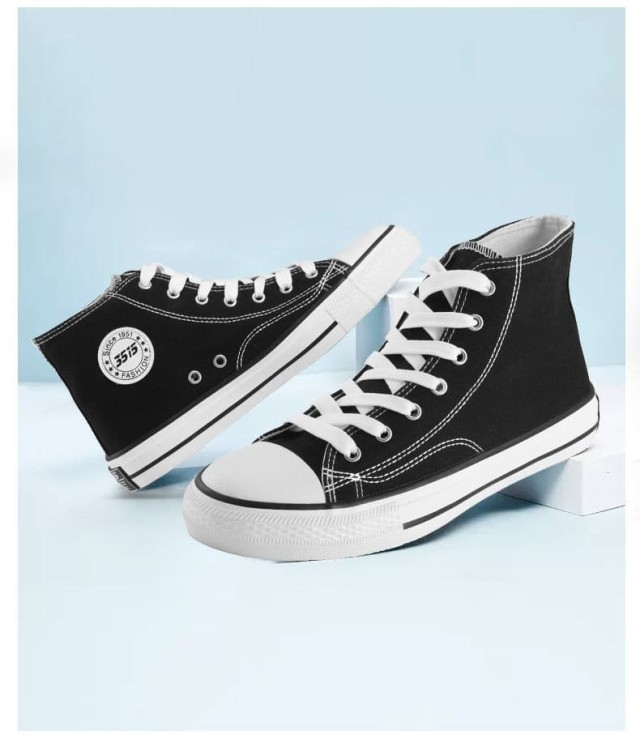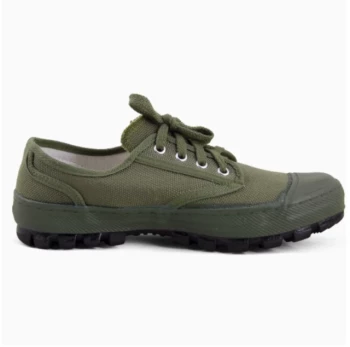Skateboarding demands precision, control, and responsiveness—qualities deeply tied to footwear design. For technical maneuvers like flip tricks, rail grinds, and bowl carving, vulcanized soles remain the gold standard. But what makes them outperform alternatives? This article breaks down the anatomy, performance advantages, and ideal use cases of vulcanized soles, backed by skate science and pro insights.
The Anatomy of Vulcanized Soles
How Vulcanization Enhances Board Feel and Flexibility
Vulcanization transforms rubber into a durable yet flexible material through heat and pressure. The process typically involves:
- Autoclave treatment: Rubber soles are heated to 120–180°C under 140–350kPa pressure, bonding the outsole to the upper.
- Foxing tape reinforcement: A strip of rubber wraps the sole’s perimeter, enhancing structural integrity without sacrificing flexibility.
The result? A thin, lightweight sole that mimics barefoot skating, offering:
- Unmatched board feel: Sensitivity to deck texture and subtle foot adjustments.
- Natural foot movement: Flexibility for flicking tricks or adjusting mid-air.
"Modern vulcanized soles are high-performance and easier to break in, eliminating the ‘stiff shoe’ phase," notes industry research.
Grip Mechanics: Rubber Compounds and Surface Adhesion
Vulcanized soles excel in grip due to:
- Softer rubber formulas: Optimized for skateboard grip tape and concrete surfaces.
- Flat tread patterns: Maximize surface contact for stability during slides and landings.
Pro skaters prioritize this grip for technical street skating, where milliseconds of traction determine trick success.
Vulcanized vs. Cup Soles: A Skater’s Trade-Off
Precision vs. Durability: When to Choose Vulcanized
| Feature | Vulcanized Soles | Cup Soles |
|---|---|---|
| Board Feel | Superior (thin profile) | Moderate (thicker sole) |
| Durability | Moderate (6–12 months) | High (12+ months) |
| Weight | Lightweight | Heavier |
| Best For | Technical tricks, bowls | Stair sets, rough terrain |
Key Insight: Cup soles (molded as one piece) offer better shock absorption but dull board feedback. Vulcanized soles prioritize control—critical for flip tricks or rail balances.
Rail Tricks and Transition Mastery: Case Studies from Pro Skaters
- Street skating: Vulcanized soles dominate kickflips and grinds due to their flick responsiveness.
- Transition skating: Their flexibility aids pumping in bowls, conserving momentum.
"For rail tricks, I need to feel the board’s edge—vulcanized soles give me that," explains a pro skater interviewed in industry reports.
Maximizing Vulcanized Sole Performance
Maintenance Tips to Preserve Flexibility and Grip
- Rotate shoes: Alternate pairs to prevent premature wear.
- Clean soles regularly: Remove dirt and grip-tape residue with a brush.
- Avoid excessive heat: Store shoes away from radiators to prevent glue degradation.
Pro Tip: Extend sole life by applying shoe goo to high-wear areas like the ollie zone.
Conclusion: Matching Sole Technology to Your Skate Style
Vulcanized soles are the silent partners behind technical skateboarding’s most fluid movements. Their blend of flexibility, grip, and sensitivity makes them ideal for skaters who prioritize precision over brute durability.
For bulk buyers and brands: 3515’s vulcanized sole production combines proven performance with scalable manufacturing—delivering the responsiveness skaters demand, batch after batch.
Ready to equip your lineup with high-performance vulcanized soles? [Contact 3515] to discuss custom solutions tailored to your skate footwear needs.
Related Products
- Wholesale High-Traction Camo Boots - Custom Manufacturer for Brands
- Durable Rubber-Soled Utility Shoes for Wholesale & Custom Brand Manufacturing
- Wholesale Durable Camo Canvas Shoes with High-Traction Rubber Soles
- Durable Canvas Work Shoes with Rubber Lug Sole | Wholesale Manufacturer
- Durable Rubber Sole Outdoor Shoes Wholesale & Custom Manufacturing
Related Articles
- How Vulcanized Soles Fall Short—And When to Choose Alternatives
- How Military Camouflage Boots Engineer Tactical Superiority: Design, Protection, and Endurance
- How to Choose Military Camouflage Boots for Mission-Specific Performance
- Why Vulcanized Soles Dominate Performance Footwear: Durability Meets Flexibility
- How Vulcanized Rubber Boots Outperform Standard Footwear: Science and Practical Benefits



















